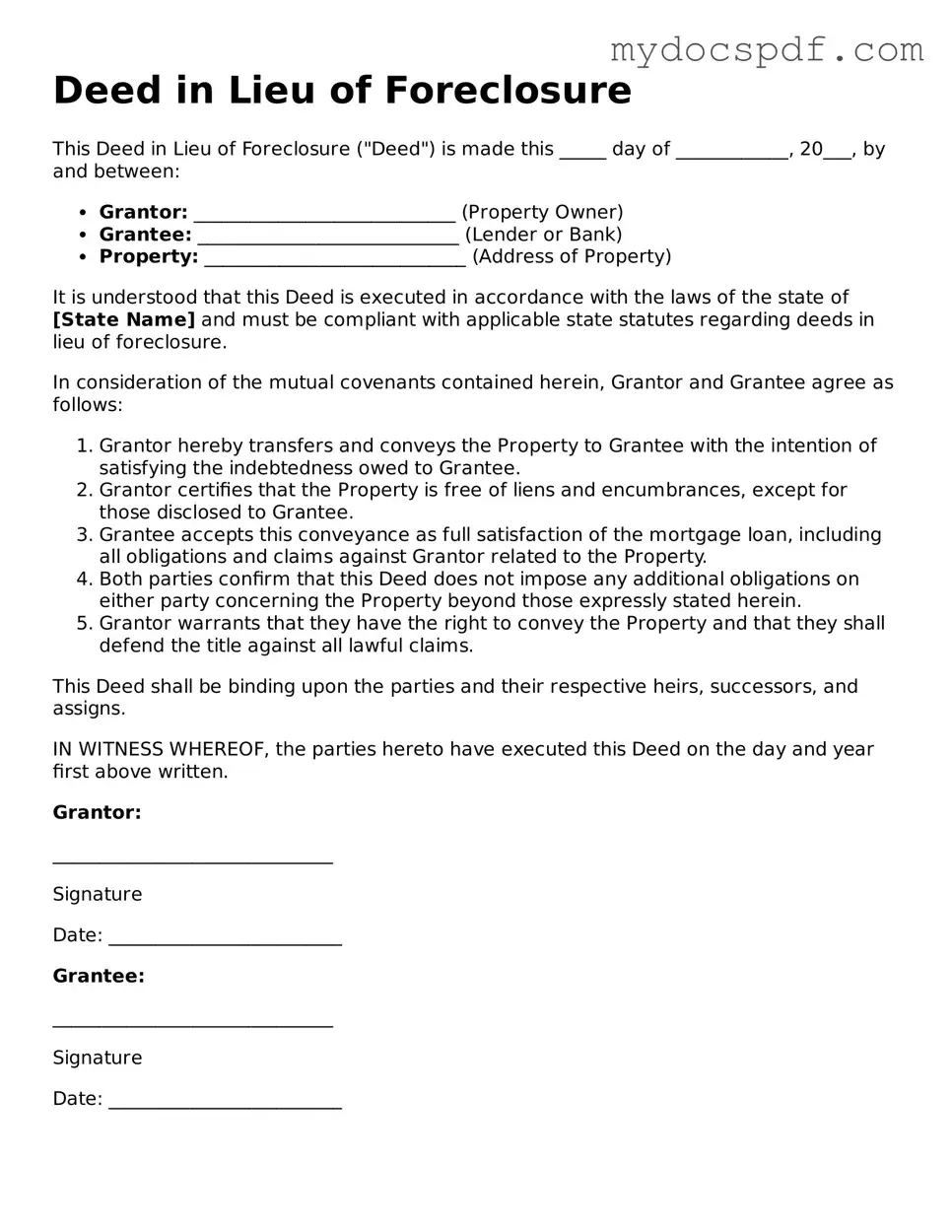Deed in Lieu of Foreclosure
This Deed in Lieu of Foreclosure ("Deed") is made this _____ day of ____________, 20___, by and between:
- Grantor: ____________________________ (Property Owner)
- Grantee: ____________________________ (Lender or Bank)
- Property: ____________________________ (Address of Property)
It is understood that this Deed is executed in accordance with the laws of the state of [State Name] and must be compliant with applicable state statutes regarding deeds in lieu of foreclosure.
In consideration of the mutual covenants contained herein, Grantor and Grantee agree as follows:
- Grantor hereby transfers and conveys the Property to Grantee with the intention of satisfying the indebtedness owed to Grantee.
- Grantor certifies that the Property is free of liens and encumbrances, except for those disclosed to Grantee.
- Grantee accepts this conveyance as full satisfaction of the mortgage loan, including all obligations and claims against Grantor related to the Property.
- Both parties confirm that this Deed does not impose any additional obligations on either party concerning the Property beyond those expressly stated herein.
- Grantor warrants that they have the right to convey the Property and that they shall defend the title against all lawful claims.
This Deed shall be binding upon the parties and their respective heirs, successors, and assigns.
IN WITNESS WHEREOF, the parties hereto have executed this Deed on the day and year first above written.
Grantor:
______________________________
Signature
Date: _________________________
Grantee:
______________________________
Signature
Date: _________________________
